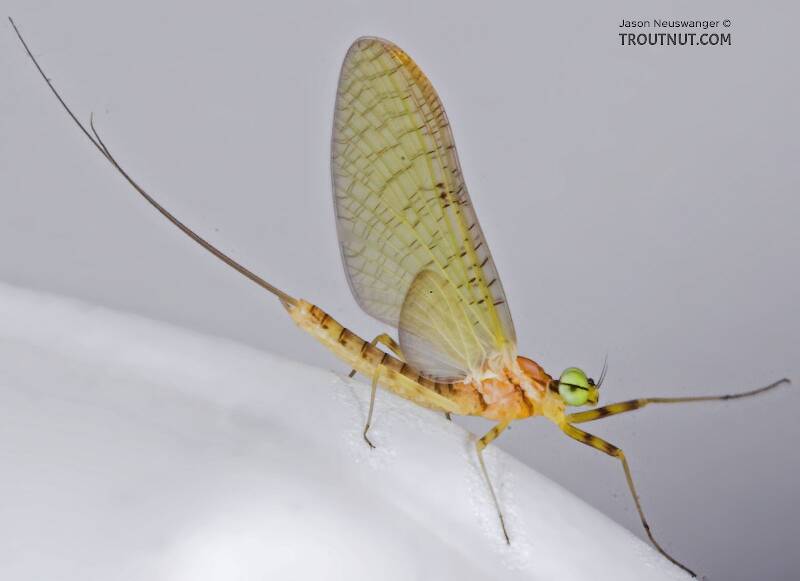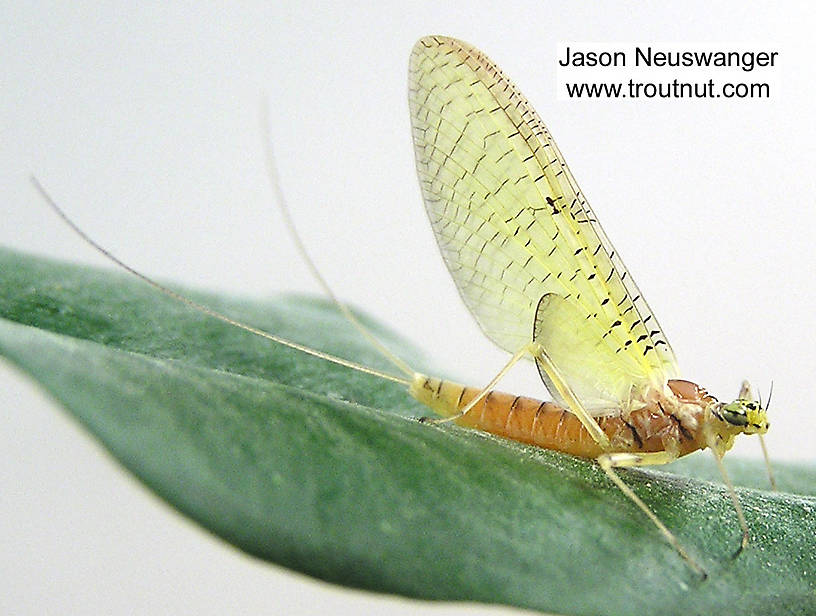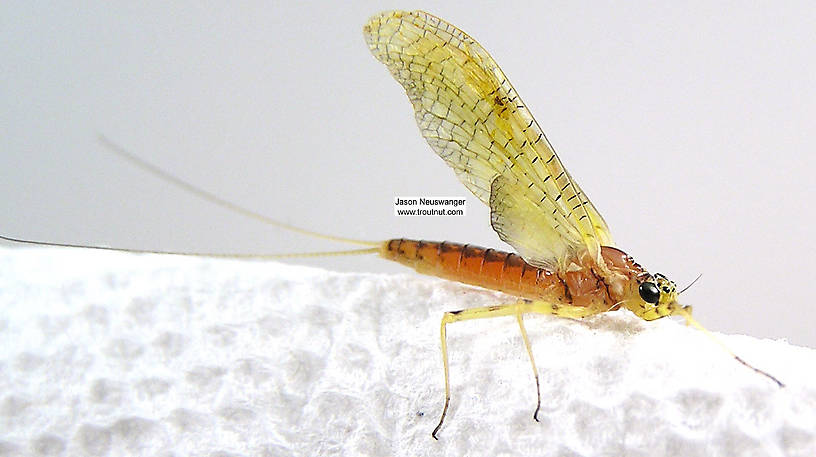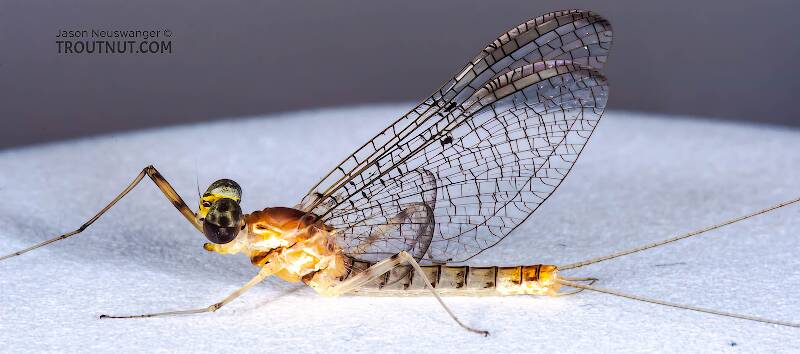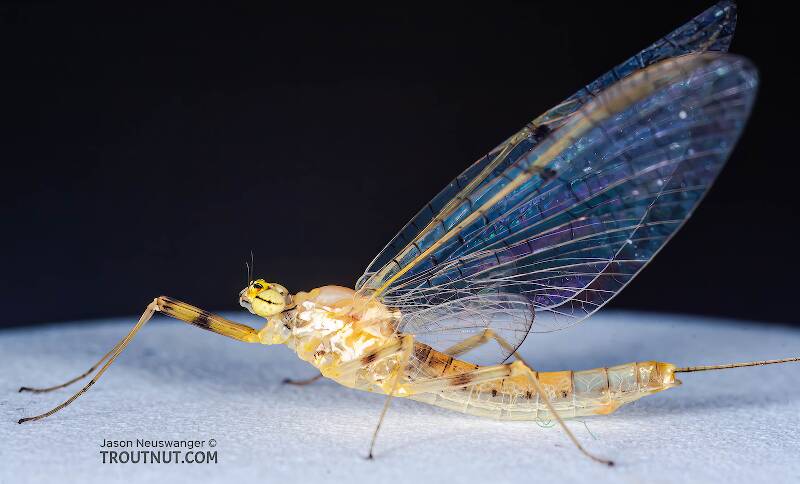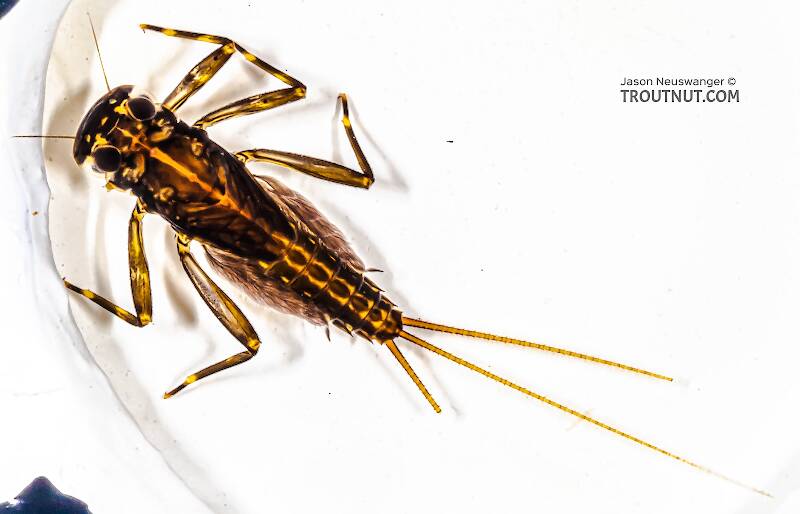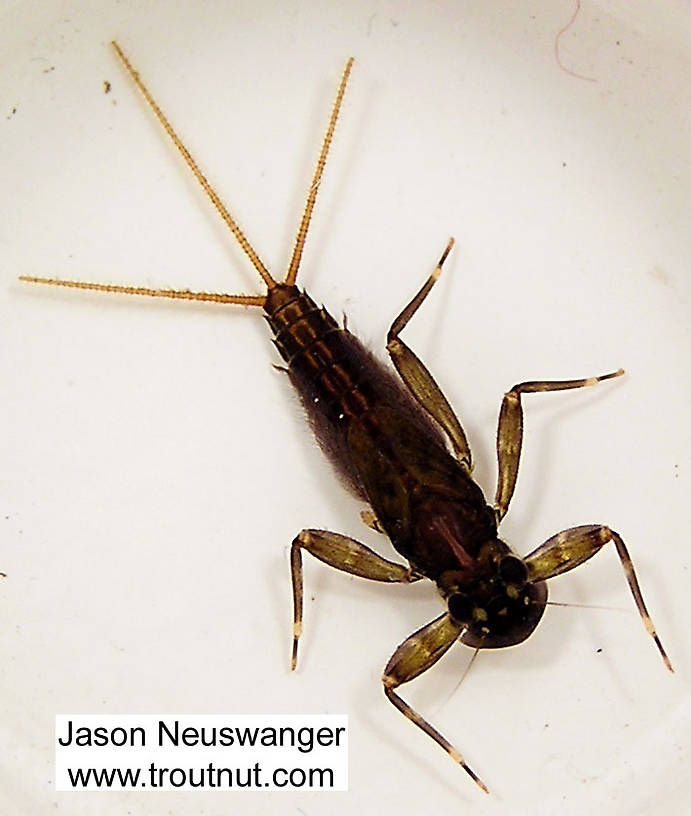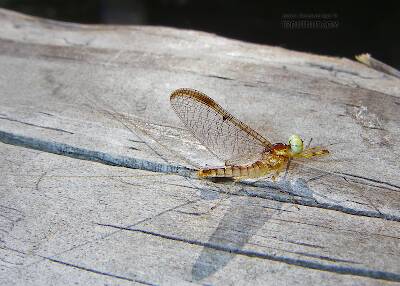
Hex Mayflies
Hexagenia limbata
The famous nocturnal Hex hatch of the Midwest (and a few other lucky locations) stirs to the surface mythically large brown trout that only touch streamers for the rest of the year.
Featured on the forum

This is a striking caddis larva with an interesting color pattern on the head. Here are some characteristics I was able to see under the microscope, but could not easily expose for a picture:
- The prosternal horn is present.
- The mandible is clearly toothed, not formed into a uniform scraper blade.
- The seems to be only 2 major setae on the ventral edge of the hind femur.
- Chloride epithelia seem to be absent from the dorsal side of any abdominal segments.
Based on these characteristics and the ones more easily visible from the pictures, this seems to be Grammotaulius. The key's description of the case is spot-on: "Case cylindrical, made of longitudinally arranged sedge or similar leaves," as is the description of the markings on the head, "Dorsum of head light brownish yellow with numerous discrete, small, dark spots." The spot pattern on the head is a very good match to figure 19.312 of Merritt R.W., Cummins, K.W., and Berg, M.B. (2019). The species ID is based on Grammotaulius betteni being the only species of this genus known in Washington state.
- The prosternal horn is present.
- The mandible is clearly toothed, not formed into a uniform scraper blade.
- The seems to be only 2 major setae on the ventral edge of the hind femur.
- Chloride epithelia seem to be absent from the dorsal side of any abdominal segments.
Based on these characteristics and the ones more easily visible from the pictures, this seems to be Grammotaulius. The key's description of the case is spot-on: "Case cylindrical, made of longitudinally arranged sedge or similar leaves," as is the description of the markings on the head, "Dorsum of head light brownish yellow with numerous discrete, small, dark spots." The spot pattern on the head is a very good match to figure 19.312 of Merritt R.W., Cummins, K.W., and Berg, M.B. (2019). The species ID is based on Grammotaulius betteni being the only species of this genus known in Washington state.

Troutnut is a project started in 2003 by salmonid ecologist Jason "Troutnut" Neuswanger to help anglers and
fly tyers unabashedly embrace the entomological side of the sport. Learn more about Troutnut or
support the project for an enhanced experience here.
Mayfly Genus Stenacron (Light Cahills)
The species in this genus were formerly classified in Stenonema. See the genus Maccaffertium for details. Only one species, Stenacron interpunctatum, is important to fly fishermen. See its page for details.
Genus Range
Specimens of the Mayfly Genus Stenacron
1 Male Dun
3 Female Duns
1 Male Spinner
1 Female Spinner
2 Nymphs
1 Streamside Picture of Stenacron Mayflies:
Discussions of Stenacron
cahills
8 replies
Posted by LittleJ on Nov 25, 2006
Last reply on Dec 1, 2006 by Troutnut
Jason
I know I'm a little out of season, butI was curious if you had any shots of Stenacron Interpunctatum next to your hook quide, or could just give me a size range. I was thinking they were 14-16 but could be wrong. Also you have written that Stenacron Interpunctatum were rarely called cahills. If so what mayfly is it that i'm after (that is common name "cahill"). The stenacron look the same to me, but i have also never kept and memorized any specimens.
Thanks
Jeff
I know I'm a little out of season, butI was curious if you had any shots of Stenacron Interpunctatum next to your hook quide, or could just give me a size range. I was thinking they were 14-16 but could be wrong. Also you have written that Stenacron Interpunctatum were rarely called cahills. If so what mayfly is it that i'm after (that is common name "cahill"). The stenacron look the same to me, but i have also never kept and memorized any specimens.
Thanks
Jeff
Start a Discussion of Stenacron
References
- Fauceglia, Ted. 2005. Mayflies . Stackpole Books.
- Knopp, Malcolm and Robert Cormier. 1997. Mayflies: An Angler's Study of Trout Water Ephemeroptera . The Lyons Press.
- Merritt R.W., Cummins, K.W., and Berg, M.B. 2019. An Introduction to the Aquatic Insects of North America (Fifth Edition). Kendall/Hunt Publishing Company.
Mayfly Genus Stenacron (Light Cahills)
Taxonomy
Species in Stenacron
Stenacron candidum
0
0
Stenacron carolina
0
0
Stenacron gildersleevei
0
0
Stenacron interpunctatumGray Foxes
3
21
Stenacron pallidum
0
0
Species in Stenacron: Stenacron candidum, Stenacron carolina, Stenacron gildersleevei, Stenacron interpunctatum, Stenacron pallidum
2 species (Stenacron floridense and Stenacron minnetonka) aren't included.


